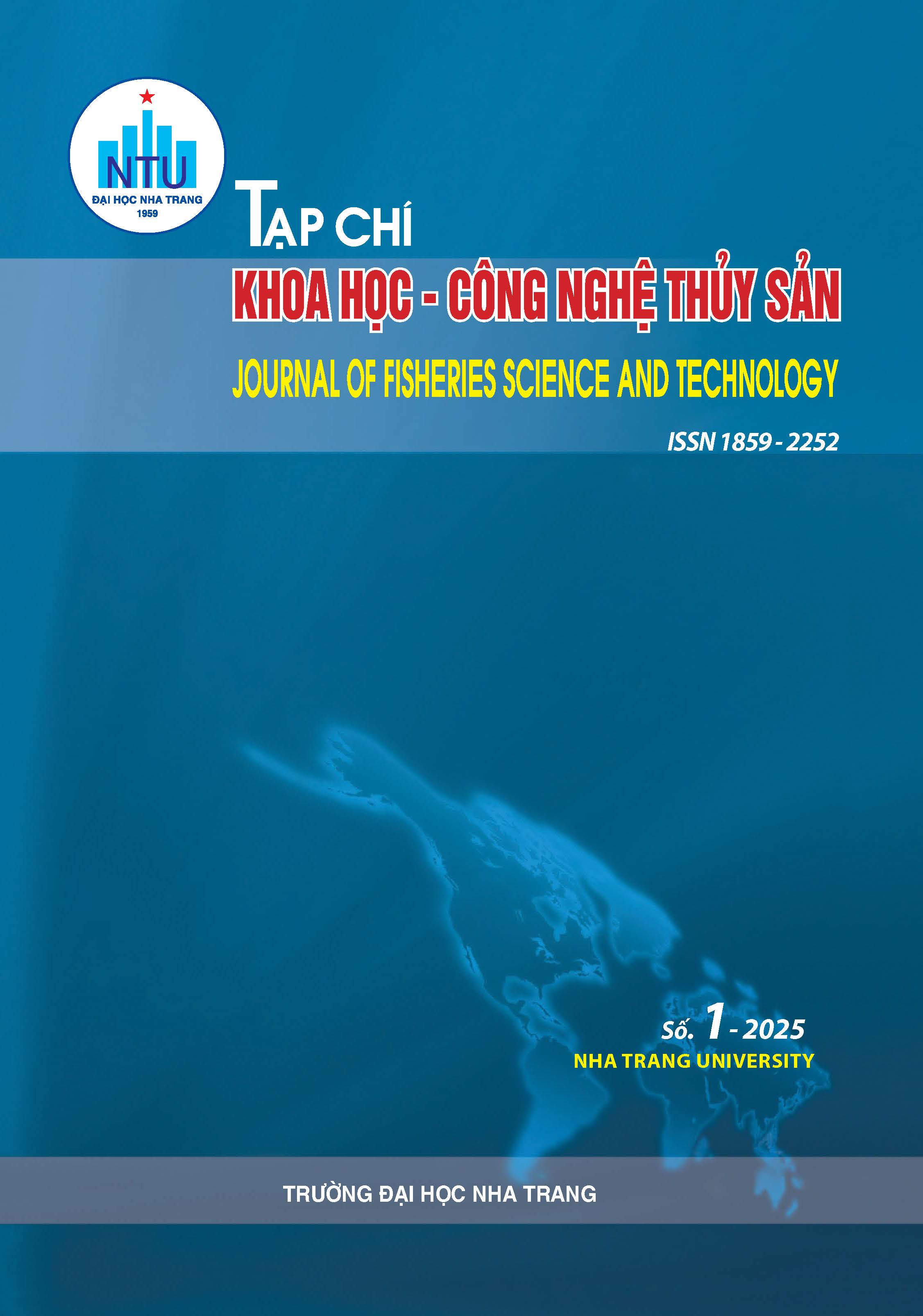##plugins.themes.huaf_theme.article.main##
Abstract
The study was conducted to evaluate the effectiveness of adding fermented green seaweed (Chaetomorpha linum) to commercial feed in nursery rearing whiteleg shrimp (Litopenaeus vannamei) postlarvae. The experiment consisted of four treatments, each repeated three times. The control treatment did not include the fermented green seaweed (0%), while the other three treatments incorporated the fermented green seaweed into the feed at ratios of 0.4%, 0.8%, and 1.2%. The initial shrimp weight was 0.11±0.01 g, reared at a density of 1,000 shrimp/m³ in 250 L tanks with a water volume of 150 L, and at a salinity of 15‰. After 30 days of rearing, the survival of shrimp in all treatments showed no significant difference (p>0.05). The treatment supplemented with 0.4% fermented green algae significantly improved the shrimp's growth rate and feed conversion ratio compared to the control group and two other treatments (p<0.05). Additionally, dietary supplementation of fermented green algae at ratios ranging from 0.4% to 1.2% helped shrimp better tolerate low abrupt salinity shock (from 15‰ to 0.5‰) and high abrupt salinity (from 15‰ to 50‰) compared to the control group. These results could contribute to the development of shrimp farming practices that adapt to climate change.
Keywords: Fermented seaweed, growth, salinity stress test, whiteleg shrimp

